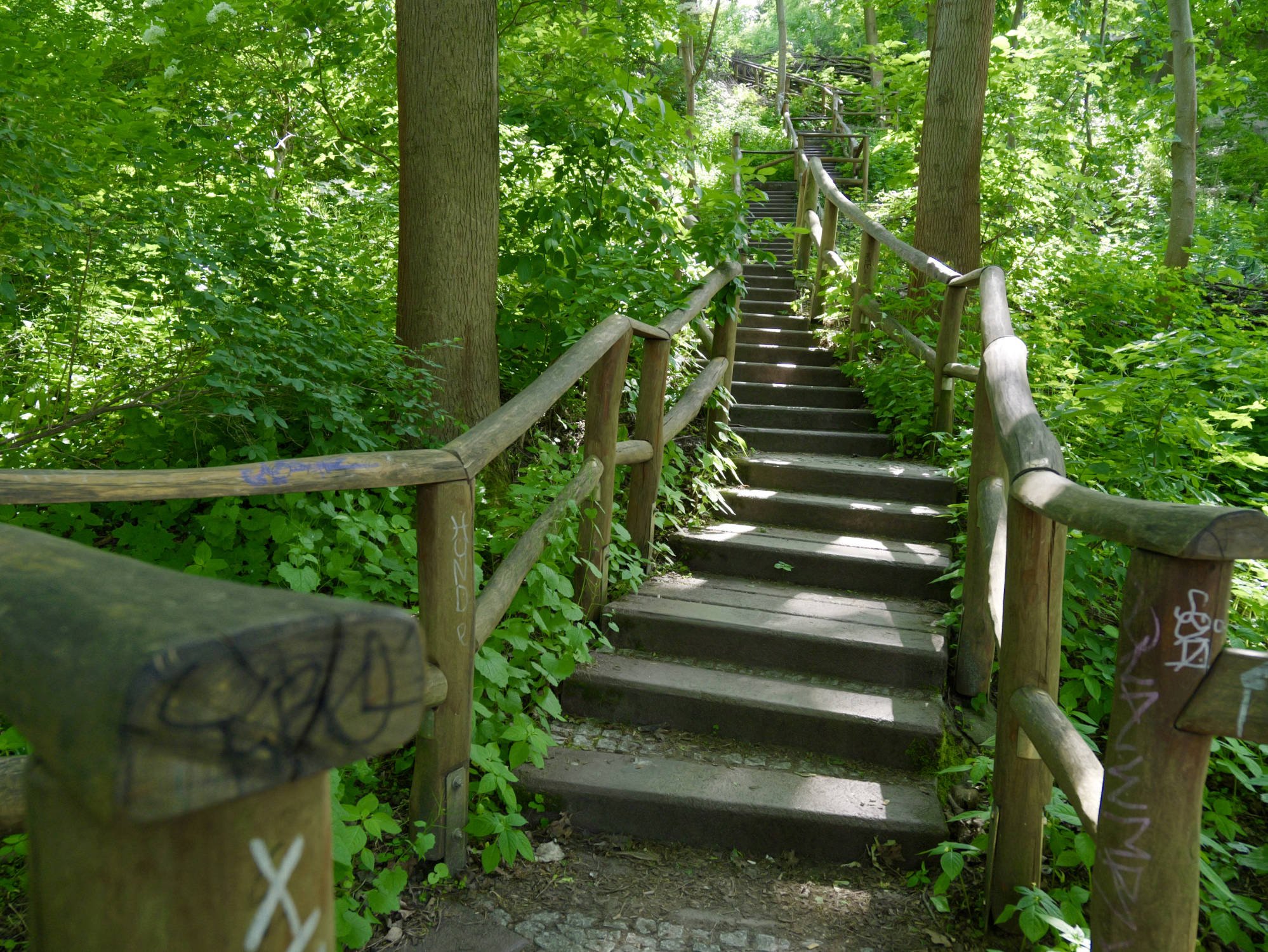The Berlin Flak Towers of WWII - Visit the Humboldthain Tower!
World War II introduced a new dimension of warfare. Far beyond the traditional battlefields, the horrors of war were brought civilian populations in huge bombing campaigns, with more than 1000 aircraft taking part in later air raids.
In response to the escalating threat of Allied air raids, Nazi Germany embarked on an ambitious project to protect its capital, Berlin, from aerial bombardment. This defence strategy materialised in the form of three colossal Flak Towers, known as "Flaktürme," strategically positioned across the city.
These massive structures, each of them the same, resembling a fortress, were constructed to house anti-aircraft weaponry capable of hitting high-altitude bombers. Positioned at Humboldthain, Friedrichshain, and the Berlin Zoo, these towers not only served as powerful defensive platforms but also provided vital shelter for thousands of civilians during the relentless air raids that characterised the later years of the war.
Only two of the 4 towers remain, but you can visit them today!
The Concept and Construction of Berlin’s Flak Towers
The term "Flak" is an abbreviation of the German word "Flugabwehrkanone," which translates to "anti-aircraft cannon." This term succinctly describes the primary function of these massive structures: to defend against aerial attacks by targeting enemy bombers with powerful artillery. The Flak Towers were part of a broader strategy to protect key cities from the increasing threat of Allied bombing raids during World War II.
Berlin's three main Flak Towers were strategically located at Humboldthain, Friedrichshain, and the Berlin Zoo. These towers were not only defensive structures but also monumental symbols of the Third Reich’s determination to protect its capital. Positioned in a triangular formation, they provided overlapping fields of fire, maximising their defensive coverage over the city.
Construction of these towers began in 1940 and was completed rapidly due to the urgent wartime needs. Built using steel-reinforced concrete, the Flak Towers were designed to withstand intense bombardments, with walls up to 3.5 meters thick. The construction involved a massive logistical effort, including the mobilisation of forced labour and POWs from across Europe.
On top of these towers were multiple gun emplacements, including the primary 128mm Flak 40 guns, capable of firing 26-kilogram shells to altitudes of up to 14,800 meters (48,500 feet). These guns were mounted on reinforced concrete platforms and were essential for the anti-aircraft defence of the city. Each tower also housed smaller calibre guns, providing a layered defence system against lower-flying aircraft.
It’s quite a hike up to the top, but it’s a very cool & unique Berlin experience!
The Berlin Flak Towers During Allied Air Raids
The Berlin Flak Towers played a crucial role during the numerous air raids that targeted the city throughout World War II. The initial raids by the RAF on Berlin began modestly, with the first significant attack occurring on the night of 25 August 1940, involving approximately 95 aircraft. These early raids caused limited physical damage but had a considerable psychological impact, prompting a shift in German defensive strategies and contributing to the construction of the Flak Towers. In short, the authorities and the Berliners now knew the threat was real.
As the war progressed, the scale of air raids escalated dramatically. By 1943, the RAF had intensified its bombing campaign, deploying over 700 bombers in a single raid on November 22. As huge as this was, much bigger air raids would come. In 1945, with the USAAF launcheds ome of the largest air raids in history, and Berlin was a key target. On 3 February 1945, which saw 1,437 heavy bombers target Berlin, causing widespread destruction, and laying the groundwork for the Soviet invasion of the German capital, which would come on April 21.
The entrance used by Berliner Unterwelten tours. Even here you start to get an idea of just how thick those walls are…
Taking shelter in the Berlin Flak Towers
The Flak Towers were designed not only to defend Berlin, but to physically shelter the Berliners. The Humboldthain Tower had room for 15-16,000 civilians to take shelter. Conditions inside were atrocious. Cramped, crowded, and overcome by fear, many Berliners squabbled with one another, worried about food, whether or not their homes had been destroyed, and above all else the air quality inside. Berlin’s WWII bunkers had ventilation systems, but due to severe overcrowding they were completely inadequate. If the air quality dropped too low, Berliners would have to leave the bunkers, no matter what was happening outside.
As grim as the reality was inside, offering physical and psychological protection is really all they were good for. It’s estimated that the guns placed on top of the Humboldthain Flak Tower, featured in my video and the images on this page, managed to only shoot down 32 of the thousands of planes that attacked Berlin.
Getting to the top is an adventure in itself. I recommend bringing a beer with you to reward yourself up at the top.
What happened to the Flak Towers after the war?
After World War II, the three Berlin Flak Towers faced various fates. The Zoo Flak Tower, heavily damaged during the war, was completely demolished by the British after several attempts - these things were built to last! The Friedrichshain Flak Tower was partially demolished, and its remnants were buried under rubble and earth, creating an artificial hill, known as a Trümmerberg, or ‘rubble mountain’. It’s now part of Volkspark Friedrichshain. Some parts of the tower still visible, if you know where to look!
The Humboldthain Flak Tower, although also targeted for demolition, was only partially destroyed due to its proximity to Soviet-controlled areas and the risk of damaging nearby railway infrastructure. Today, the remaining structure has been integrated into Humboldthain Park. The viewing platform is free to visit, and is often populated by partying and/or amorous teenagers.
Only Berliner Unterwelten are allowed to take people inside of the building. Their tours are great!
If you want to explore WWII Berlin with me, you can find all of my tours on my homepage.
Further reading on the Berlin Flak Towers
Want to know more? Here you go:
Books
Beevor, Berlin: The Downfall 1945
Kopleck, Berlin 1933-1945
Donath: Architecture in Berlin 1933-1945
Online Sources
The Berlin Flak Tower - History and Facts | History Hit
Germany's Mega Structures: A Berlin Flak Tower Through the Eyes of a Soldier | War History Online
Bombing Berlin: The Biggest Wartime Raid on Hitler's Capital | National WWII Museum
Operation Gomorrah: The First of the Firestorms | National WWII Museum
History - Berliner Unterwelten
Flak towers: Hitler ordered bomb-proof concrete buildings with 11-foot-thick walls to ward off aerial attacks | The Vintage News Read more: The Vintage News


































